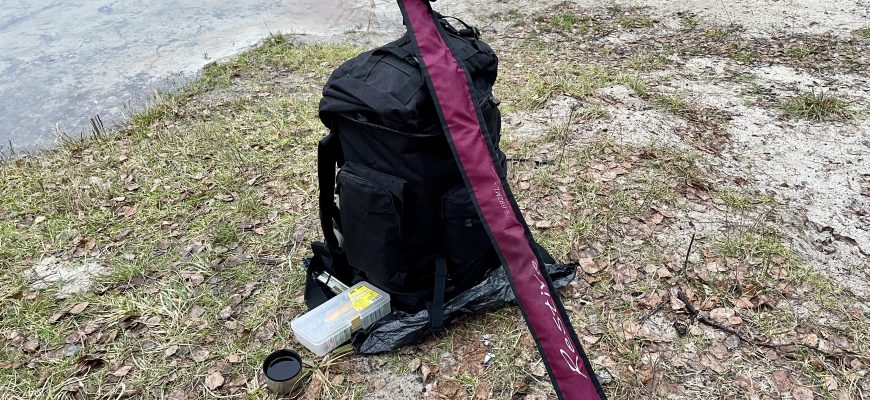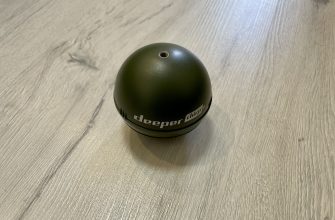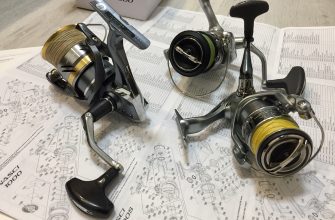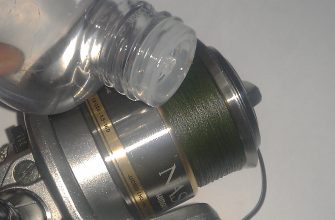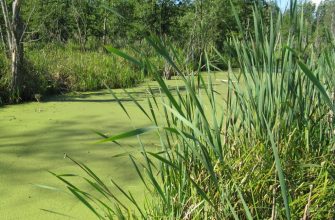More than half of my fishing trips in recent years, and almost all my fishing trips in previous years, were from the shore. And I had to go to the river by public transport, bus or train, and then still walk for an hour or two. All these circumstances greatly affected my equipment, first of all my backpack. My fishing trips are one-day trips. I depart early in the morning and return late in the evening.
I will tell about my approach, my understanding, I hope the reader will find it useful tips and answers to questions. So.
Ideally, all things should fit in a backpack. In the hands only spinning rod. In the backpack should fit warm boots made of porous eva material, and in warm seasons wading boots. Boots are a very important attribute of fishing. They protect the lower part of the body from ticks, which are very abundant in our area. Second, they allow you to have clean pants, so that calmly on the way back to take public transportation. Instead of boots there can be wading pants. There are other fishing trips where you don’t need to carry everything in one backpack. As a rule, it is either fishing from a boat, or cases when you come directly to the watercourse by car and there is no need to go far and you can do with a small backpack with the essentials. But now we are talking about fishing trips with big crossings when we carry all our belongings behind our backs.
Personal preferences
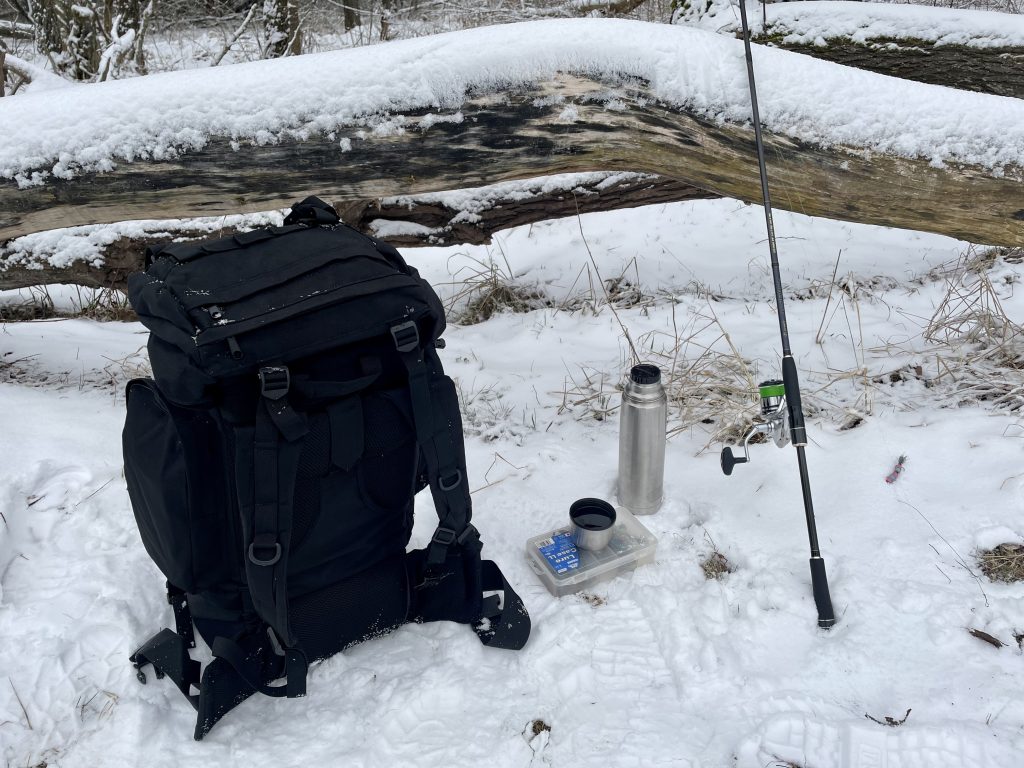
I have been using the Ranger 75 l backpack for a year now. It is a backpack in the price range of about 100$. This is a small price for a backpack of this level. This is a military backpack, so because of the large mass production it was made relatively inexpensive. In my opinion, this is about the minimum price limit of the backpack for active fishing. Cheaper models do not survive a couple of months, they are rather designed for rare trips to the barbecue. Among the more expensive segment there are good backpacks, they win on the weight of the material and reliability, but not always.
On the example of a particular backpack, I will describe the main criteria by which I choose a backpack for hiking day fishing. It’s not about the brand or specific model. Of course, many parameters are due to my personal preferences based on extensive experience, they should not be taken as an absolute guide, but correlate with their own understanding and circumstances. I will accompany my conclusions with explanations.
As for the Ranger 75 l backpack black, which I use at the time of writing these lines for about a year. At the same time, I walk with him at least once a week. Sometimes I use it more often, for non-fishing trips and mushroom hikes. All in all, it is already enough time to draw conclusions.
Pros
- Ergonomics and functionality. This is exactly what I needed.
- Comfort on your back. When I came to the store, I put it on my back and realized that this is the most comfortable backpack I have ever interacted with. Which was confirmed by hundreds of kilometers traveled with it.
Cons
- Of the minuses I can call the appearance after a year of use a slight peeling of the material in places that are bent many times. But the material holds up well in the cold, does not break. Small defects are not noticeable from the outside and do not change the properties of the backpack.
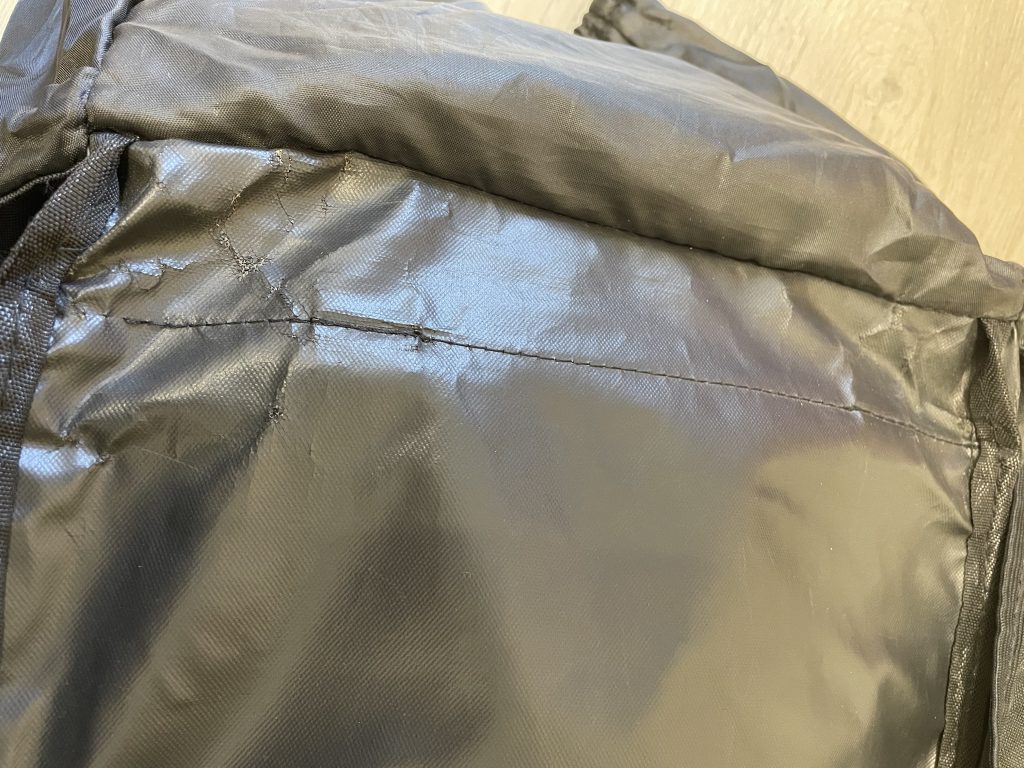
- I broke the fastener of the waist belt by stepping on it when the backpack was on the ground. One tab broke off, the fastener still snaps into place and does its job. Works and in this form, so I did not have time to find a replacement.
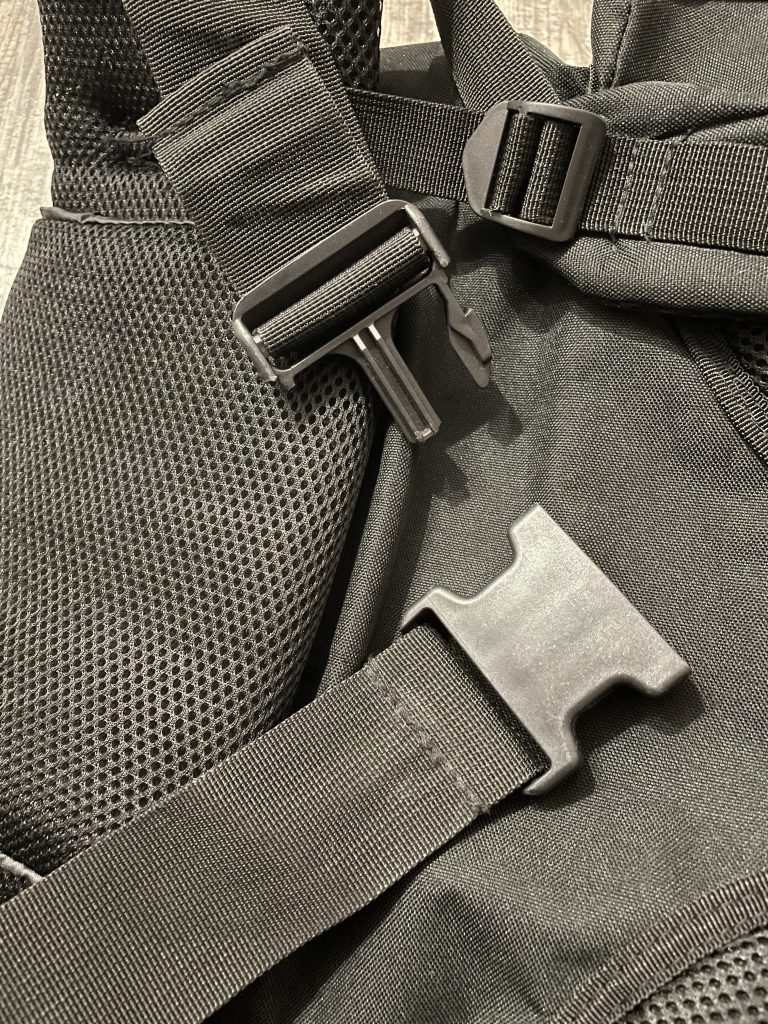
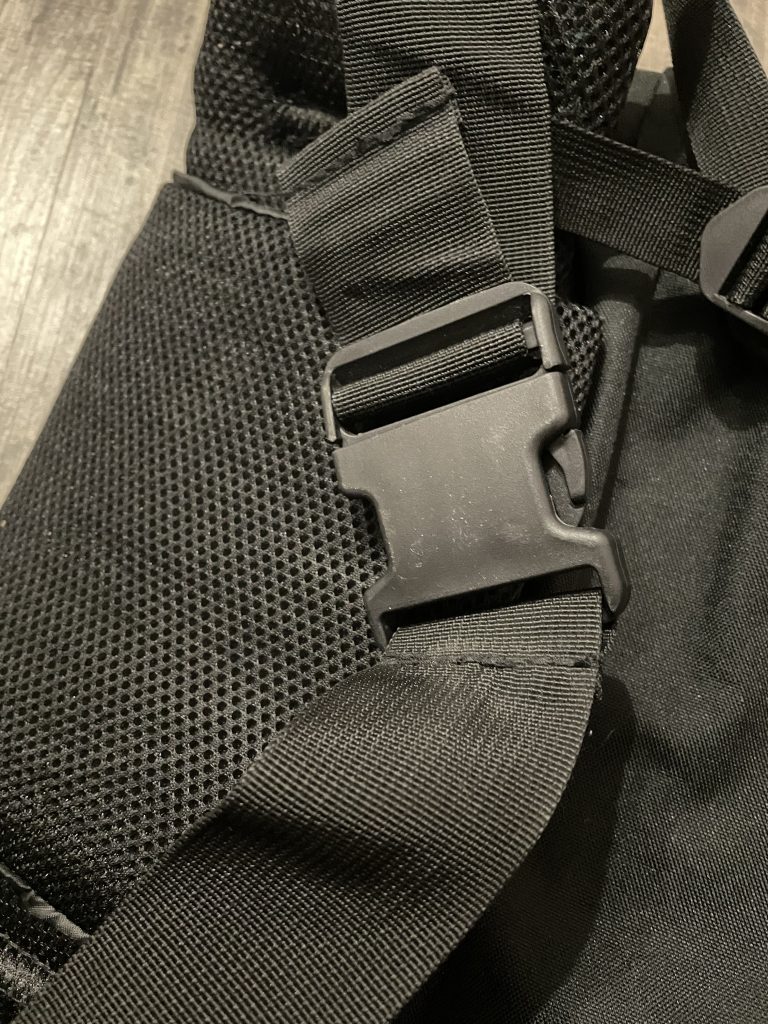
- Third. Once I loaded it with non-profile cargo, for this reason I tore one fastener. I had to sew and stitch the rest at the same time. The shoe shop helped me with this.
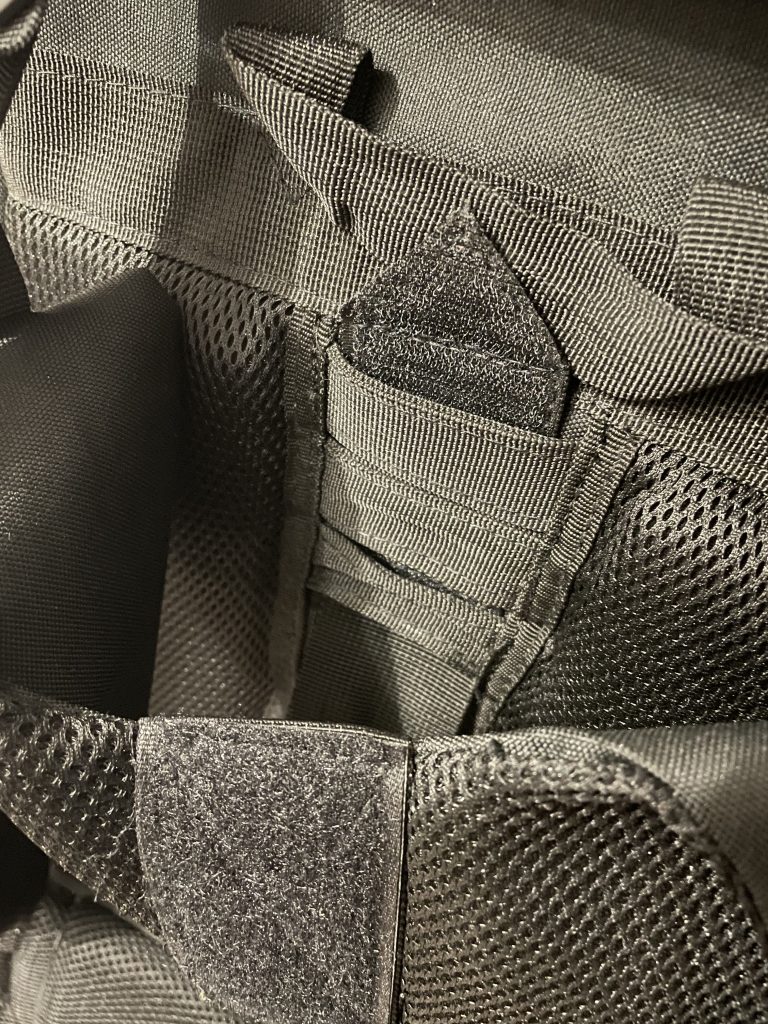
At the moment I am very satisfied with this model of backpack. I will move on to more general recommendations.
How to choose a backpack for hiking fishing
Volume and size of the backpack
I consider a volume of 75 liters to be optimal. Volumes from 60 to 80 liters can be considered.
Sizes larger than 80 liters for a one-day fishing trip will be too big and bulky. They are designed for multi-day camping trips.
Backpacks smaller than 60 liters are suitable for those situations where there is no need to carry boots or waders. This is usually the situation when you have a car and you drive it to the shore of a body of water. You can change shoes near the car, return to it for lunch or for spare tackle. In this case, a small backpack is preferable. It is lighter, it is easier to wade through bushes.

60-80 liters. I used a backpack of 45 liters for a long period. It was always not enough volume for me. After you put your boots in it, only half of the actual volume remains. Plus for eva 44 EUR (10.5 USA, 9.5 UK) size boots, there is usually not enough bottom area to accommodate them while standing.
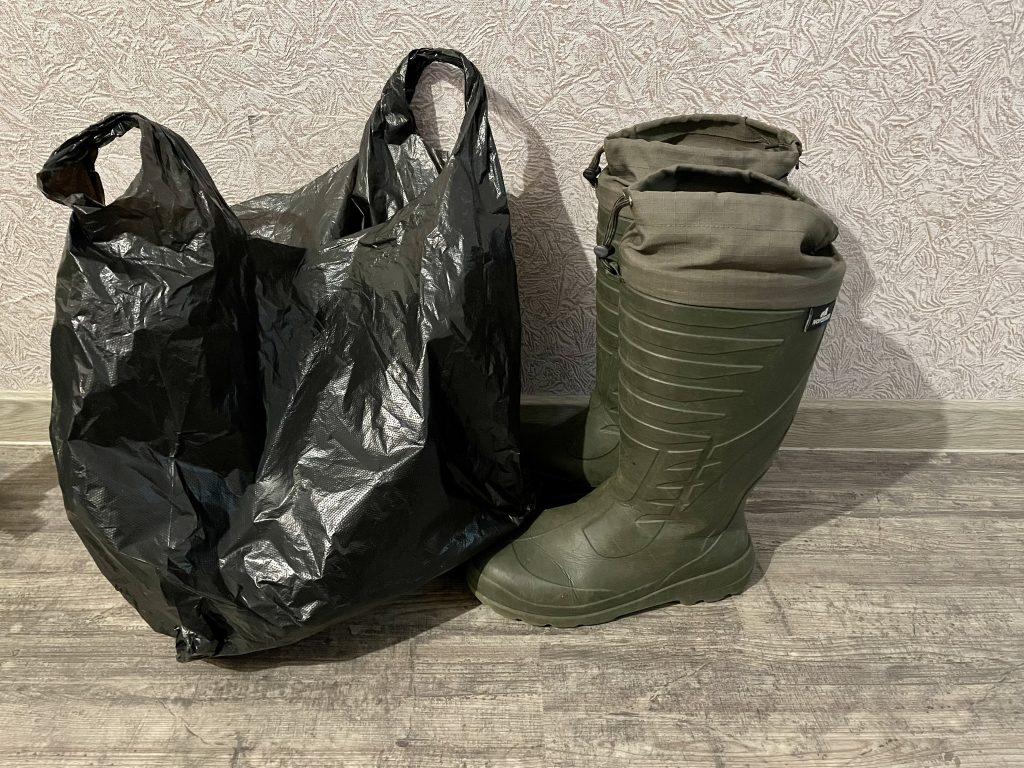

After going to 75 liters, I realized that this is the optimal volume. I allow for some variation, but I think the point is clear. In addition to boots, we have a lot of other equipment in the backpack. This is directly baits, and additional clothing, especially in the off-season, when in the morning minus temperatures, and in the afternoon it is comfortable in a T-shirt. In the heat I take a lot of water, in winter time a thermos. On the way back the extra space will be useful if you want to take your fish with you, or maybe on the way back you will pick up a lot of mushrooms. I will tell you more about my hiking fishing equipment in another article.
Optimal backpack shape

The most suitable for fishing is an anatomical backpack with an internal frame and a padded back.

A waist belt is a must, it transfers part of the weight from the shoulders to the lower part of the body. It should be easily adjustable.
The part of the backpack that is in contact with your back should be padded and should wick away moisture. I find it optimal to have one large bag, sometimes divided into two containers, a lower and an upper one. It is also accessible through a zipper that unzips from the bottom. The classic version of a backpack. Any additional divisions of the bag are harmful. We put boots in it and pack the rest of the equipment. On fishing boots on us, we in the bottom of the bag we pack the boots or sneakers in which we walked or drove to fishing, as well as water and other heavy things. If there are divisions in the backpack, it is usually more difficult to pack all the stuff in them.
Inside the frame pocket I usually put a small porous material, a piece of mat. It comes in handy in winter and in the off-season to make a comfortable shelter and not to sit on the frozen cold or wet ground. I use it by putting it in a plastic bag, after a break I roll up the bag and store it in the pocket of the cape flap. I also keep a tube of metal pike leashes and spare bags in the frame pocket.
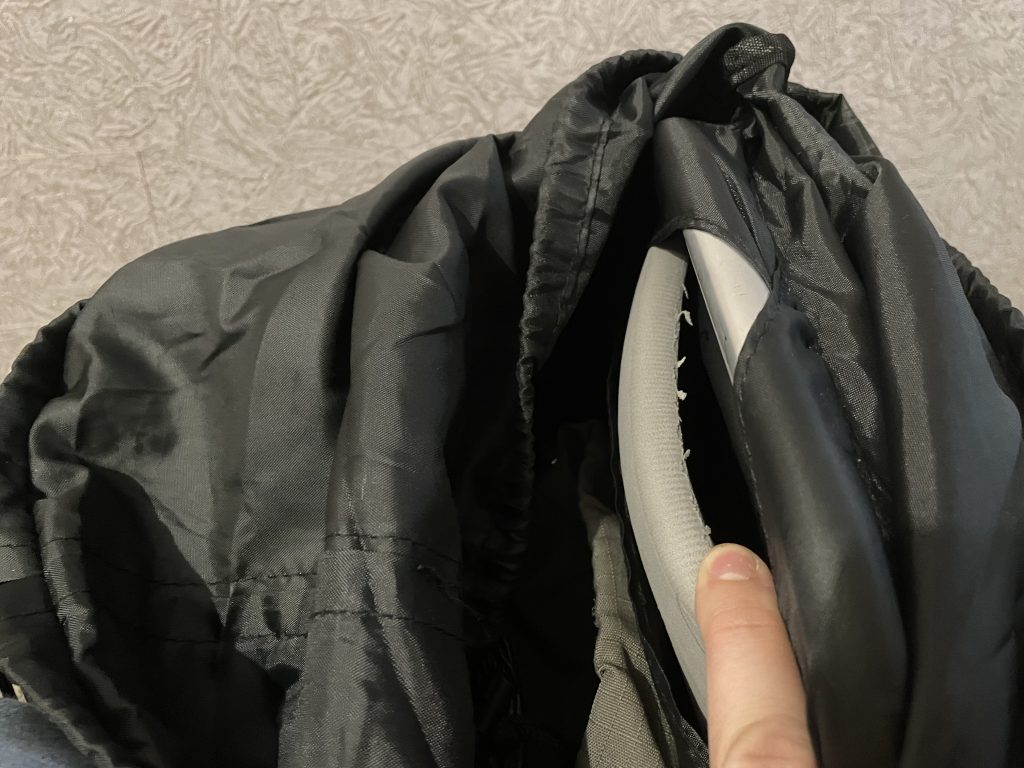
Outside I prefer two large pockets on the sides, one on the back of the rucksack, two in the flap. It is better to have fewer pockets, but large, than many small ones or divided inside into sections. Practice shows that in a larger pocket you can make better use of space.
In one side pocket I keep a poverbank, salt, first aid kit, superglue, flickers, knife. In the second one I keep food for traveling or hiking: a can of coke or energy drink, a chocolate bar, a thermo mug with coffee in winter. When fishing, it holds one or two boxes of lures that need quick access.
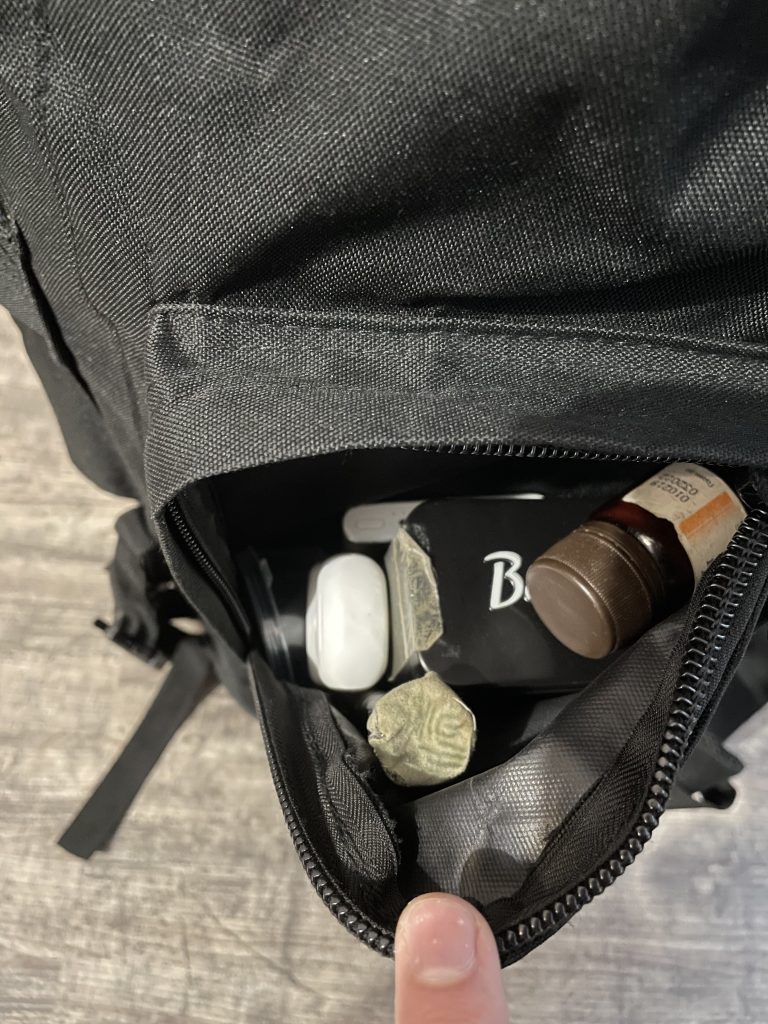
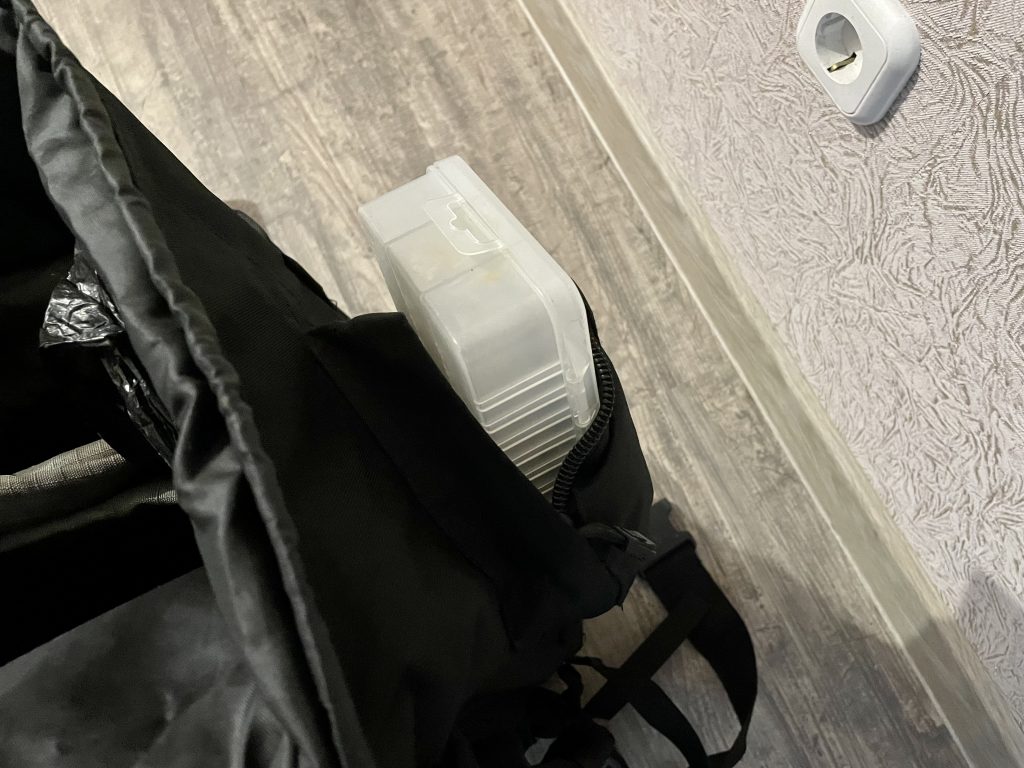
One pocket in the flap serves for things that need quick access. For example, a lure box, scales or bags of silicone lures. The second flap holds a rain and dust cover and a pouch for a padded seat.
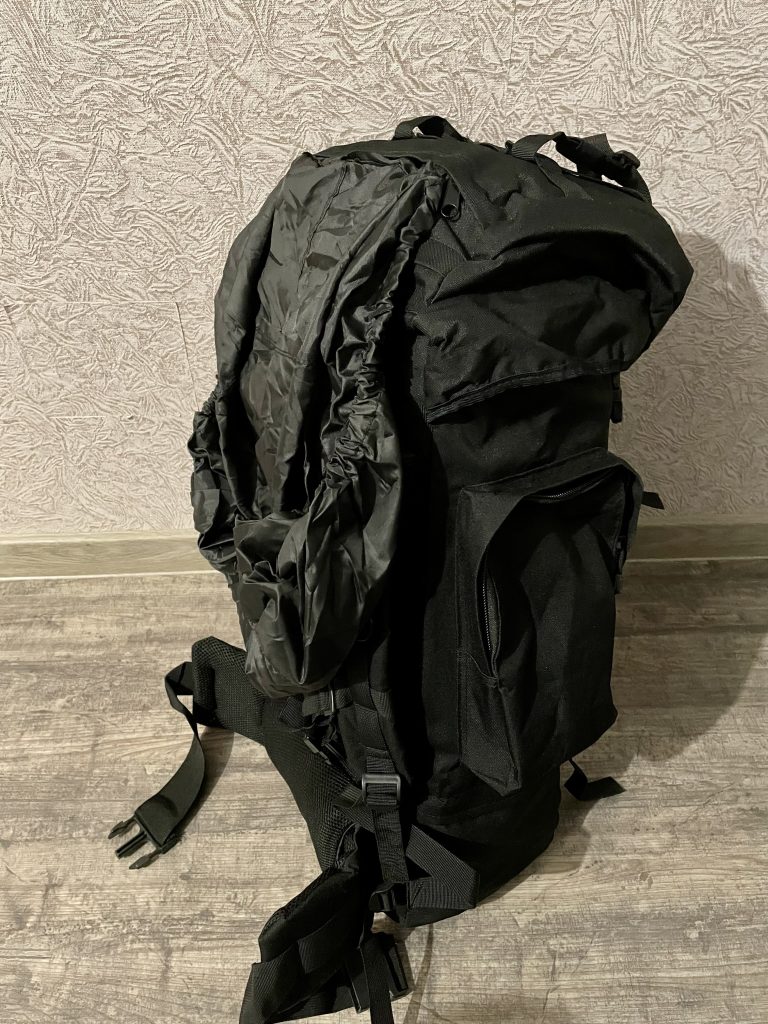
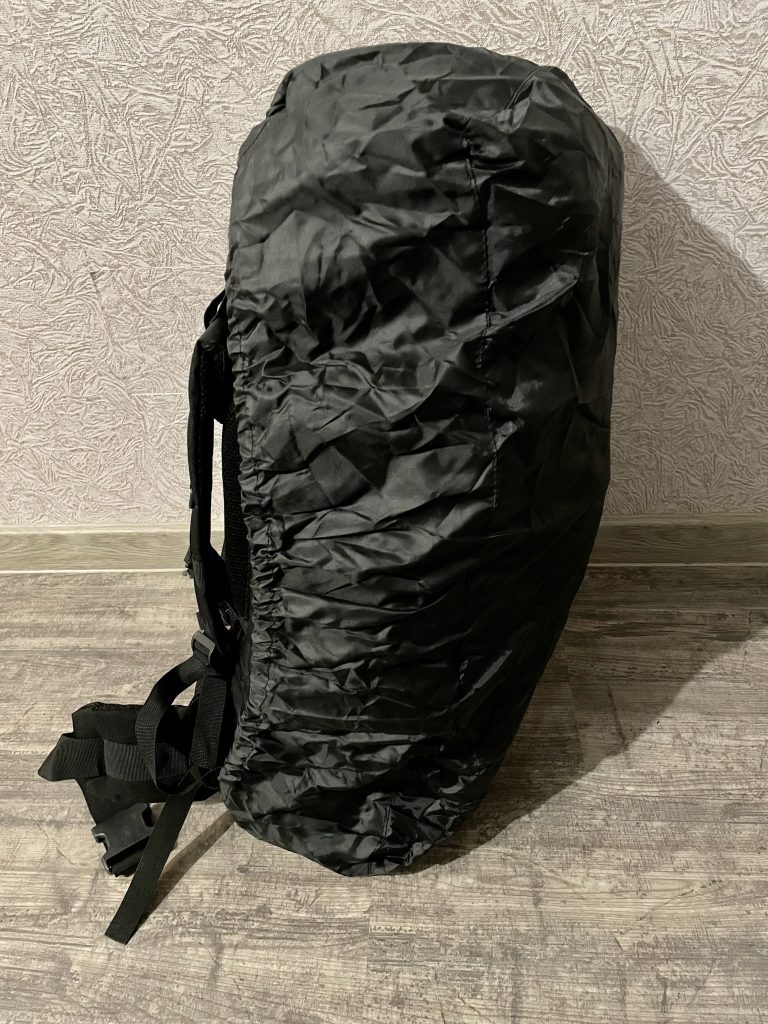
The pocket on the back of the backpack holds a spare cord for recharging your phone. Constantly malfunctioning in the wet. Spare packs, mini leg warmers, wipes.
From above, the neck of the bag is tightened with straps. Even higher it is covered with a flap, which protects the luggage from falling twigs, spruce needles, insects and rain. All zippers in this place is worse, it is a weak point, under heavy loads they can not withstand and begin to separate. Only in small backpacks up to 30 liters they are acceptable, where it is important not to weigh the entire structure. The valve on the back should be sewn to the backpack, with the other is attached with two adjustable straps.
Fittings are better metal or quality plastic. In cheap models of backpacks this is the weakest point, which fails first. Zippers should be covered with folds of fabric to protect from rain.
There are backpacks on which you can add pockets and other things on top. Or they have a lot of ropes for decorative purposes. They’re not good for our case. The structure should be as monolithic as possible and with fewer parts, which will cling to branches and thorns of bushes.
Weight and material of the backpack
The backpack itself weighs a lot, usually 1.5-2.5 kg. This should be taken into consideration. Lighter backpacks, as a rule, are not suitable for fishing. Perhaps for tourists who walk on convenient trails, they are suitable, but we often have to wade through bushes and climb under trees. That’s why we prefer a heavier, but rougher and more wear-resistant material.
A backpack should be waterproof, even if your areas don’t get much rain. Less dust will get inside. In expensive backpacks, this can be a special cordura material. In a backpack for 100$ it certainly can not be, even if something similar manufacturer writes in the specifications. But cheaper materials can also be quite acceptable, here it is worth focusing on the brand and reviews on a particular model. The main thing is that cheap material in the cold or even at a comfortable temperature, but after a month of active use, the membrane of the material can crack and or turn into rags.
Color
I love the color black or olive. I don’t like khaki colors. It’s a matter of taste. But I wouldn’t recommend too bright and very light colors. It’s not practical, they’ll get dirty. And camouflage on small streams and rivers will not be superfluous. Leave the brightly colored backpacks to tourists.
